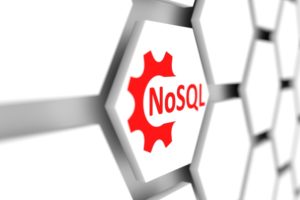The database market is currently undergoing a significant transformation as it grapples with the demands posed by AI applications, pushing the boundaries of traditional computing architectures. With machine learning models becoming increasingly complex and data-intensive, the role of databases in supporting these applications has become indispensable.
In response to these challenges, vector databases have emerged as a prominent solution. They store information as vectors or numerical representations, particularly adept at supporting language models and enhancing user interactions such as chatbots accessing knowledge bases. Gartner predicts a substantial upcoming uptick in their adoption, projecting that 30% of enterprises will integrate vector databases into their generative AI models by 2026, up from a mere 2% in 2023. However, it’s crucial to recognize that vector databases represent just the beginning of this evolution.
Database Evolution Driven by Business Needs
The history of databases has been shaped by significant milestones influenced by both technological advancements and evolving business needs. In the 1970s, the introduction of relational databases and SQL marked a revolutionary moment, enabling structured data organization and complex query capabilities. This era saw the establishment of systems that became essential for managing enterprise data effectively. Many of these now-legacy systems are still in play today.
As business demands evolved over the next 20 years, and a generation of unstructured data surged, particularly with the growth of internet-based applications, the limitations of traditional, legacy relational databases became apparent. This challenge was answered by the emergence of NoSQL databases in the early 2000s. Designed to be more flexible and scalable, NoSQL solutions catered specifically to the needs of large-scale web applications and environments where data structures could vary widely.
These milestones underscore the continuous need for evolution in database technology, driven by the imperatives of accommodating increasingly diverse data types and supporting scalable, high-performance applications in a digital age marked by rapid technological advancement.
Entering the Era of Cloud-Centric Solutions
As cloud-centric strategies continue to gain traction across IT departments, the demand for databases capable of scalable, distributed transactions continues to rise. The critical importance of distributed relational databases cannot be overstated in how they ensure the reliability and performance needed for today’s ‘always on’ business environment. Uninterrupted application availability is paramount, even during planned and unplanned disruptions.
The rise of distributed SQL has been a game-changer for modern databases, driven largely by cloud principles. Traditional monolithic database architectures often struggle to meet the demands of contemporary applications that require high availability, horizontal scalability, and global data distribution.
Distributed SQL databases address these challenges by leveraging cloud-native principles, offering seamless scalability and resilience. By distributing data across multiple nodes, they ensure that the system remains robust even in the face of hardware failures, enabling uninterrupted service. This approach aligns perfectly with the cloud’s promise of flexibility and on-demand resource allocation, making it an ideal choice for businesses aiming to achieve true global scale and resilience.
As enterprises continue to migrate to the cloud, distributed SQL is rapidly becoming the standard for handling the complex, data-intensive workloads of today and tomorrow.
Balancing Innovation and Reliability
As we enter the AI revolution, Vector databases are gaining importance for accelerating engagement and growth development. Their advanced scalability and efficiency have significantly boosted their adoption. Vector databases enhance customer interactions by providing personalized services and improving data management efficiency, thereby cutting operational costs.
Yet, vector databases alone have limitations. Operational data must be in a modern cloud-native database with AI-ecosystem integrations to fully leverage AI. This unified approach provides a scalable, resilient infrastructure, offering stability and built-in business continuity for sustained operational excellence.
The proliferation of AI applications will unlock key business opportunities for large enterprises further necessitating the need for a modern distributed SQL database capable of rapid scale and cloud portability.
The Need to Integrate Distributed SQL with Vector Databases
Integrating distributed SQL and vector database solutions presents a strategic modernization opportunity for businesses navigating AI-driven applications. Vector databases excel in quick data retrieval and analysis but face challenges in resilience and scalability, areas where distributed SQL shines—two critical requirements for robust, mission-critical operations. Vector databases, as standalone solutions, often require integration with other data stacks and metadata to maximize their effectiveness.
Pure-play vector databases typically target specific AI applications, necessitating integration with a relational database to address broader business needs comprehensively. Combining distributed SQL and vector databases provides a scalable, resilient infrastructure with built-in business continuity, allowing businesses to manage and analyze extensive datasets while optimizing performance and maintaining operational robustness.
As dstributed SQL and vector databases evolve, their integrations are already driving incremental advancements, potentially catalyzing the next transformative shift within the database industry. This change will build incrementally through thoughtful integration across existing, proven systems. With this strategic approach, companies can fortify their operations against risks while positioning themselves to seize new opportunities, fostering sustainable growth and bolstering long-term business resilience.
About the author: Spencer Kimball is the CEO Cockroach Labs, the company behind the CockroachDB distributed relational database. Kimball was named a 2020 Datanami Person to Watch. Kimball created the GNU Image Manipulation Program (GIMP) while attending Cal Berkeley.
behind the CockroachDB distributed relational database. Kimball was named a 2020 Datanami Person to Watch. Kimball created the GNU Image Manipulation Program (GIMP) while attending Cal Berkeley.
Related Items:
Vectors: Coming to a Database Near You
Forrester Slices and Dices the Vector Database Market
Can Thought Vectors Deliver Human-Level Reasoning?
The post The Rise, Realities, and Potential, of Distributed SQL + Vector Databases in the AI Era appeared first on Datanami.




0 Commentaires